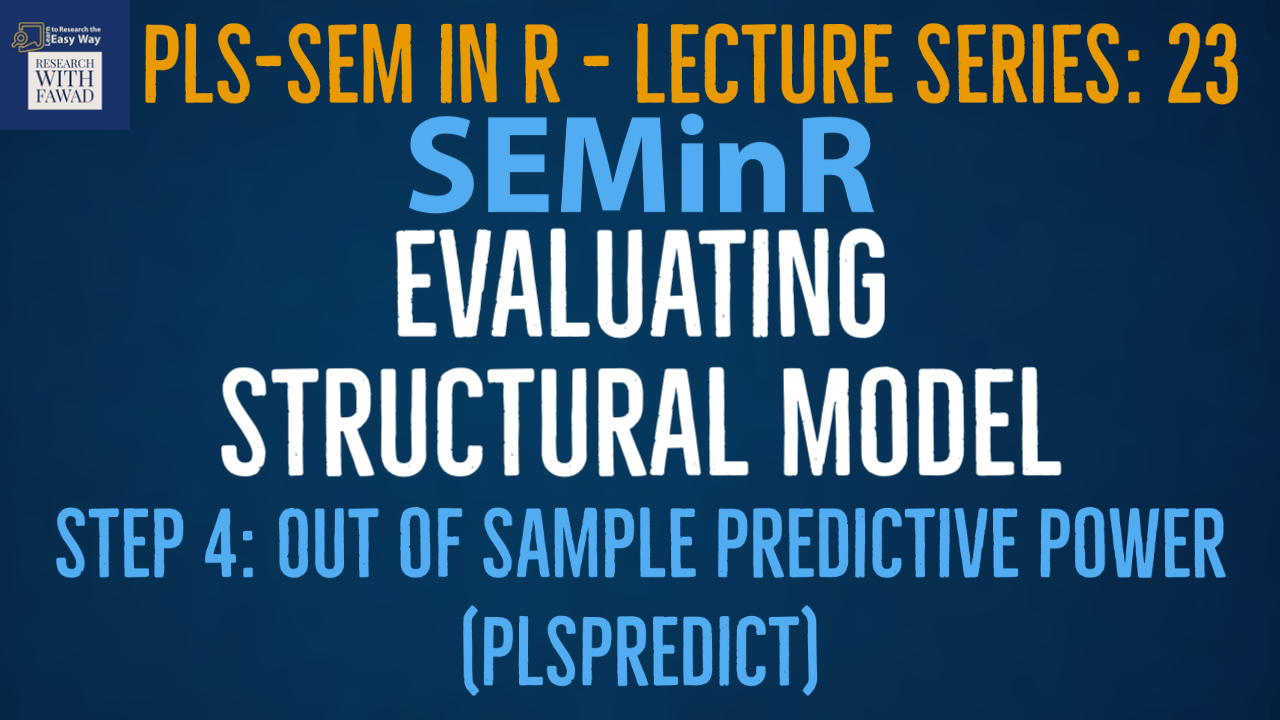
SEMinR Lecture Series
This session is focused on Step 4 of the structural model evaluation that is Out of Sample Predictive Power, assessed through PLSPredict.

This session is focused on Step 4 of the structural model evaluation that is Out of Sample Predictive Power, assessed through PLSPredict.
The estimates are then used to predict the holdout sample (Holdout 1 predicted).
This process is repeated for Fold 2 through Fold 5, yielding predictions for all five holdout samples. For example, Fold 2 becomes the holdout sample and the training sample consists of Fold 1 and Folds 3, 4 and 5.
Consequently, each case in every holdout sample has a predicted value based on a model in which that case was not used to estimate the model parameters. The accuracy of these predictions is then summarized in the prediction statistics.
If all indicators in the PLS-SEM analysis have lower RMSE (or MAE) value compared to the naïve LM benchmark, the model has high predictive power.
If the majority (or the same number) of indicators in the PLS-SEM analysis yields smaller prediction errors compared to the LM, this indicates a medium predictive power.
If a minority of the dependent construct’s indicators produce lower PLS-SEM prediction errors compared to the naïve LM benchmark, this indicates the model has low predictive power.
If the PLS-SEM analysis (compared to the LM) yields lower prediction errors in terms of the RMSE (or the MAE) for none of the indicators, this indicates the model lacks predictive power.
Analyzing the construct’s indicators (Fig.),
we find that the PLS path model has lower out-of-sample predictive error (RMSE) compared to the naïve LM model benchmark for all indicators (sections: PLS out-of-sample metrics and LM out-of-sample metrics)
Accordingly, we conclude that the model has a high predictive power.
Hair Jr, J. F., Hult, G. T. M., Ringle, C. M., Sarstedt, M., Danks, N. P., & Ray, S. (2021). Partial Least Squares Structural Equation Modeling (PLS-SEM) Using R: A Workbook.
The tutorials on SEMinR are based on the mentioned book. The book is open source and available for download under this link.